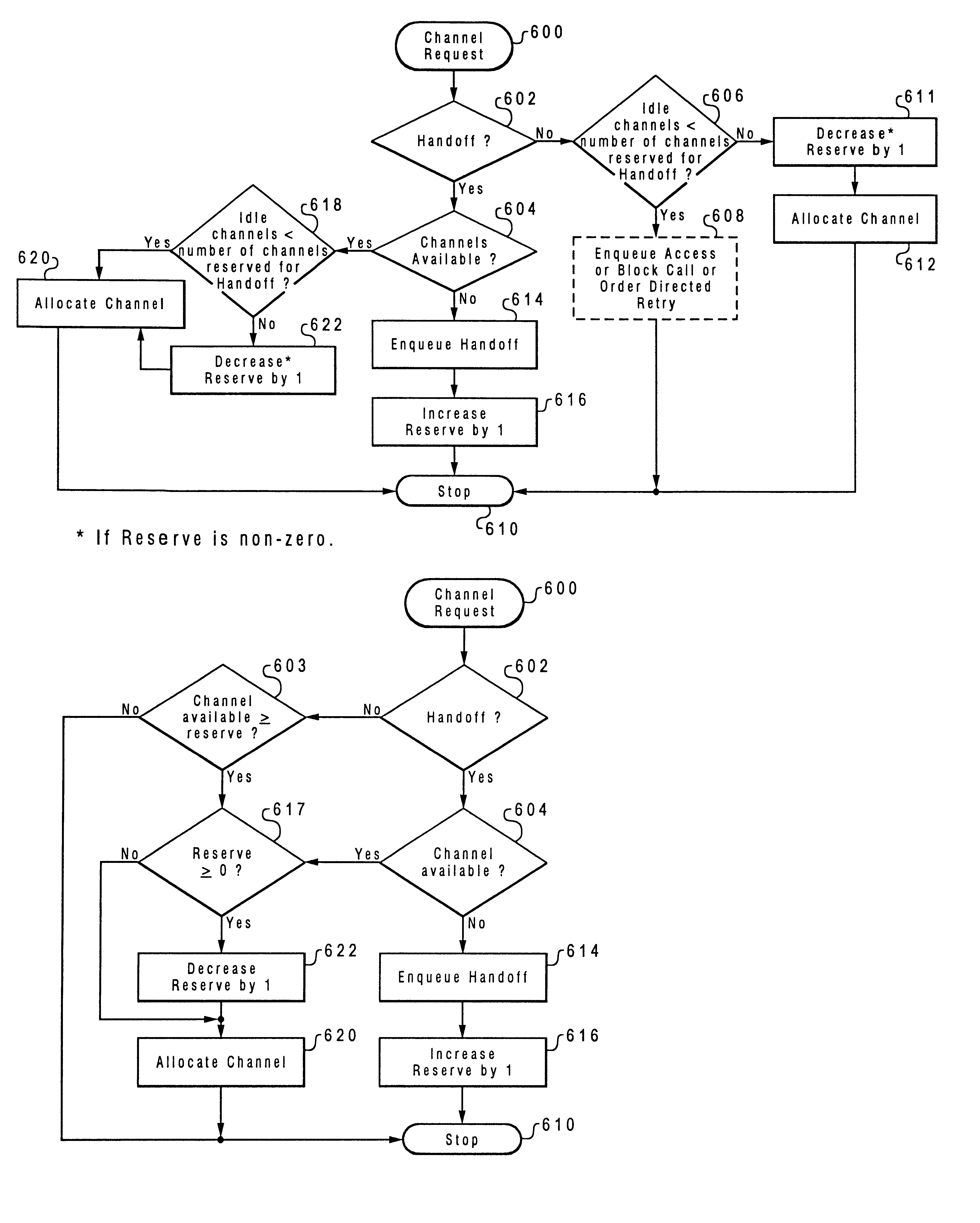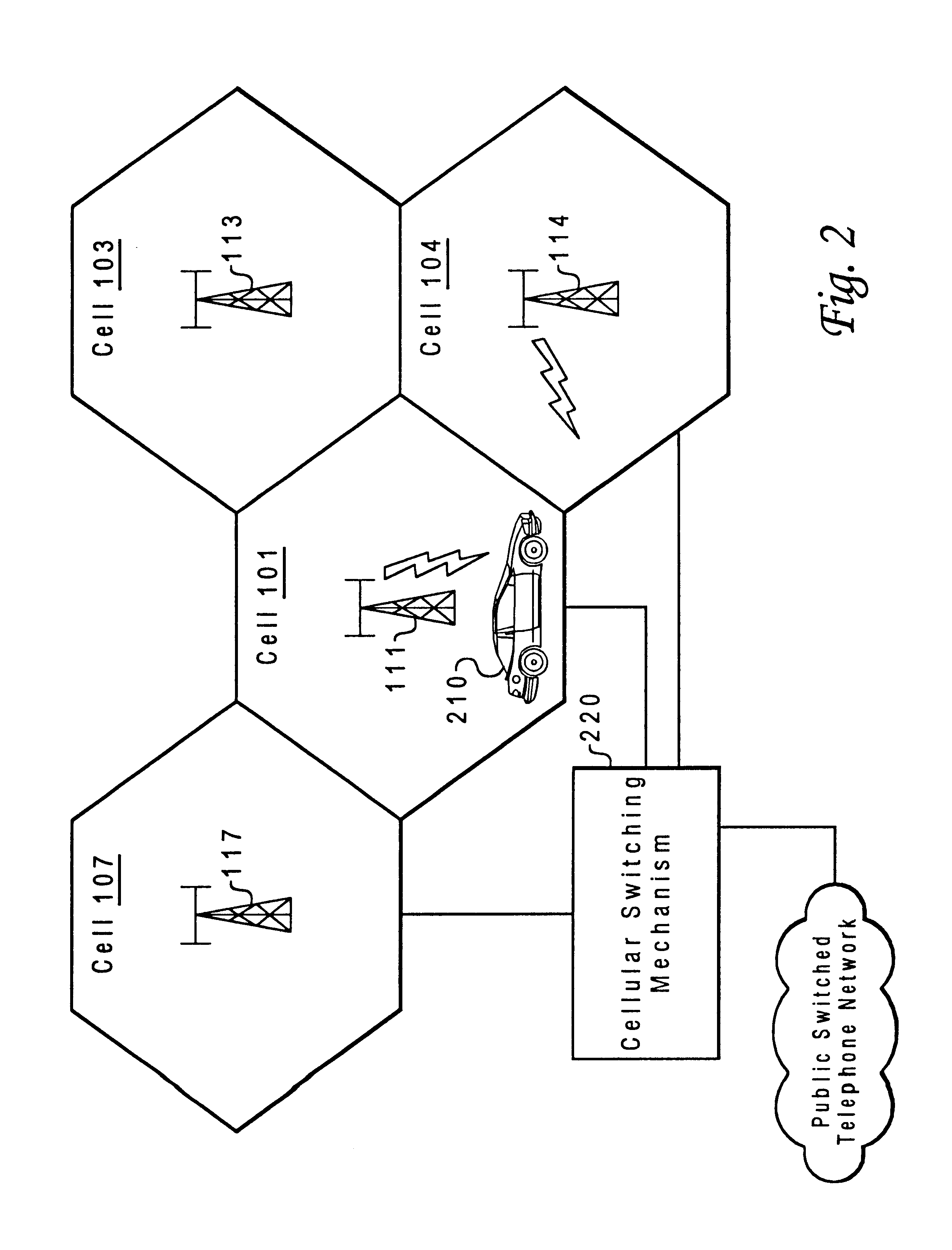Method of integrating handoff queuing with adaptive handoff reserve channels
a technology of adaptive handoff and reserve channel, which is applied in the direction of radio transmission, network traffic/resource management, electrical equipment, etc., can solve the problems of not being able to provide more channels within the service area, the number of channels available for use is limited, and the system is very expensive for users
- Summary
- Abstract
- Description
- Claims
- Application Information
AI Technical Summary
Benefits of technology
Problems solved by technology
Method used
Image
Examples
Embodiment Construction
With reference to the figures and in particular with reference now to FIG. 1, there is depicted a cell cluster within a wireless communication system having a cellular architecture within which the method and system of the present invention may be implemented. Recall that in the above discussion it was noted that frequency reuse is a concept that has been utilized to allow cellular communications over a large area. It is common to create a cell cluster, as is shown in FIG. 1, whereby the frequency reuse concept is implemented. A cell cluster is a group of cells. No channels are reused within a cluster. FIG. 1 illustrates seven-cell cluster 100.
A "cell" is the basic geographic unit of a cellular system. The term "cellular" comes from the honeycomb shape of the areas into which a coverage region is divided. In FIG. 1 each cell 101, 102, 103, 104, 105, 106, and 107 is depicted as a honeycomb shape within which base stations 111, 112, 113, 114, 115, 116 and 117, respectively, are shown....
PUM
 Login to View More
Login to View More Abstract
Description
Claims
Application Information
 Login to View More
Login to View More - R&D
- Intellectual Property
- Life Sciences
- Materials
- Tech Scout
- Unparalleled Data Quality
- Higher Quality Content
- 60% Fewer Hallucinations
Browse by: Latest US Patents, China's latest patents, Technical Efficacy Thesaurus, Application Domain, Technology Topic, Popular Technical Reports.
© 2025 PatSnap. All rights reserved.Legal|Privacy policy|Modern Slavery Act Transparency Statement|Sitemap|About US| Contact US: help@patsnap.com



